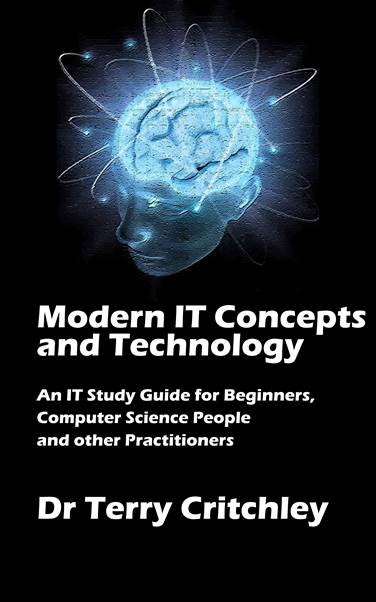The word "digital" is today thrown around in word and phrase like rice at a wedding and never do two utterances thereof have the same meaning. Common phrases like "digital skills" and "digital transformation" are explained in 101 different ways. The outcome of this is a predictable cycle of confusion, especially at business management level where often the answer to business issues is "more technology."
Start with "Digital" for den Dummkopfen - Part 1
Digital Tansformation
A term applied to a transition of some sort involving computers (digital ones). It covers the extreme range of activities from buying shedloads of new, shiny technology and bolt it on top current business models to changing your business from selling hamburgers to brain surgery services.
The "shedloads" view is of course nonsense and, as a result of that thinking, I feel many people's perception of digital transformation is off-beam. I have been saying ad nauseam (for example of the current UK NHS [National Health Service]) IT plans) that business process comes before products (technology). The crux of this matter is that businesses are changing rapidly for various reasons; obsolescence of products, competition, new markets, regulatory edicts and so on, therefore the business strategy and tactics must change to stay in business, let alone prosper and grow. Get this change wrong and it can be "bye, cruel world;" trying to solve it via technology alone simply speeds up the company's demise.
The "digital" computer, used properly, can aid, not drive, this change in various ways, ranging from streamlining routine administration tasks to aiding marketing, customer care and sales with useful output from business analytics and kindred tools. In other words, the computer is a tool to help implement business changes.
For rapid business change, this computer assistance needs to be rapid too, hence the newer functional terms arising in IT, such as agile, microservices, Docker, Kubernetes, continuous delivery (of applications) and so on.
In short, useful digital transformation means altering or designing new business processes, for reasons given above, and implementing them via the people and technology changes needed to support these new business processes.
Supporting References
If you are still in doubt about what I am saying, take a look at the following extracts from the cited IT papers on this topic:
Filling the digital transformation skills gap
"The other belief I have is that nothing makes a bad business process worse than putting a bunch of tech around it,'' he says. "Our goal is to tear the business process apart, make sure it's optimized and then build the proper enabling technology to make it efficient."
"But if you take a step back and look at your business model and [think about] changing how you do things to be efficient and effective and deliver the particular service for your organization in a digital manner, often that goes beyond the technical stuff,'' she says. Echoing Bertolini, Holman adds, "You can get an engineer to build things, but if you haven't listened to the stakeholders, then whatever you've built will not be successful and meet the needs of the organization."
Digital transformation: 10 counterintuitive tips
"Don't treat digital transformation as an IT project. Digital transformation affects the entire business – it's about changing processes, not just about new software."
What is Digital Transformation
"Digital transformation is the noteworthy and accelerating transformation of procedures, activities and foundational components of a business leveraging its operating model to its infrastructure with the application of digital technology across society in a strategic and prioritized way."
What is Digital Transformation?
"Wrapped inside those topics are data analytics, technologies, and software – all of which are enablers, not drivers."
Summary
Digital Transformation (DT) means developing new ways and processes of doing business to grow or even stay alive in a competitive ecosystem. There is a basic misunderstanding of this transformation when couched in a term like digital transformation which is often taken to mean "computerization." This is a mistake and breaks the 3Ps rule (People, Processes and Products (technology in IT) by omitting people and processes. Such an error can be dangerous where embracing it might mean loss of production, money or, in the healthcare sphere, lives.
DT involves new and revised business processes translated into digital (IT) processes by suitably trained people supported by appropriate technology, in that order. If you lead DT with technology, your business will get a bloody nose, just like a boxer leading with his nose. I know, because I've been there and watched it happen in my decades at the coal face of IT.
One other factor in DT is that in general, business people are afraid of challenging IT personnel on account of their own lack of knowledge of the subject. I firmly believe state of business managers remaining in the "IT-unwashed" state is incompatible with an effective digital transformation since it takes two to tango in this new business and digital ecosystem. In this hotbed environment, the business person's attitude of "Oh, I leave all that sort of mumbo jumbo to my techies" is no longer viable or safe.
This mandates some form of training in the use of IT for business managers at all levels of influence. I have scoured the internet for such and found little that might fill the bill in this important area. This is a digital black hole in my view as today business and IT are inextricably linked.
That is why it is important to understand what I am saying in this blog, my arguments amply supported by several other authoritative sources.


